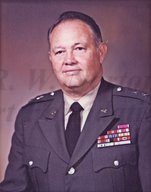
|

|
|
|
|
George was born at home at 1720 Allen Avenue in Shreveport. His parents were George E. McGovern, a shoe salesman, and Dorathiea Belle Clark McGovern. The couple separated when George was about six months old. He and his mother lived with his maternal grandparents. He calls his grandmother, Carrie Belle Clark, "the most outstanding female figure I had". Young George supplemented the family income by working at a grocery store and at shoe stores after school and on weekends. He also sold newspapers, including the extras published on December 7, 1941. The family moved out "to the country" on Mooringsport Road where they lived with his aunt Mida Coleman, his mother's sister. The household consisted of him, his mother, his aunt, and grandparents. "When it rained you moved the slop jar to catch the rain," he recalls of the house that had neither indoor plumbing, nor, for many years, electricity. George graduated from Byrd High School in 1943. He began college at LSU, but returned in less than a semester and entered Centenary College. Drafted, George reported for induction on December 20, 1944. He took basic training at Fort Knox, where he also trained in tanks. As World War II drew to a close, he shipped out to the Pacific, stationed first on Okinawa. There, with his unit, 57th Field Artillery of the 7th Infantry Division, he helped round up Japanese soldiers who remained on the island after the famous battle. After the war ended the 57th went on to Seoul, Korea. By that time he was a first sergeant and in command of B Battery. He sailed home in November of 1946, and was discharged in San Antonio on November 24, 1946. Returning to Shreveport, he enrolled at Centenary College, where he studied history, government, and economics. He graduated in August of 1948. Meanwhile, on June 1, 1948, he had married Dorothy Yearwood. (They would have five children, 11 grandchildren and three great-grandchildren.) Still a member of the army reserves, George received a direct commission as second lieutenant on July 30, 1948, then was promoted to first lieutenant in September of 1950. In June of 1951 he returned to active duty at Camp Carson in Colorado with the newly formed 40th Field Artillery Group. He graduated from Field Artillery School at Fort Sill near Lawton, Oklahoma, then received orders for Korea, arriving there in March of 1952.There he returned to B Battery, 57th Field Artillery. He was soon made commander of the battery of eight-inch howitzers. George returned to America in October of 1952 and was discharged at Fort Hood near Killeen, Texas. The next day, he went back to work at Yearwood Uniforms in Shreveport. Meanwhile, he began a long career in the Army Reserve and rose in the ranks. By 1962 he was executive officer of 95th Infantry Regiment, then was commanding 4013th U.S. Army Garrison from 1969 to 1973, when he received his first star and took command of 377th GOCOM in New Orleans, a unit for corps support. He also sat on the reserve policy board, where one member was Norman Schwarzkopf. The unit established policy for the National Guard and Army Reserve. While George served in Washington, Dorothy ran the business. "I had some fine people. Our employees were our family," he remarks of Yearwood Uniforms. He also served at foreign duty stations in Germany, Puerto Rico and Australia. He was promoted to major general on February 6, 1978. His last command was 122 ARCOM in Little Rock, Arkansas, a post in which he coordinated all reserve troops in Arkansas, Louisiana and Oklahoma. Meanwhile, throughout the years, he served in several capacities at Sunset Acres Baptist Church. He retired from military service in September of 1983. |


